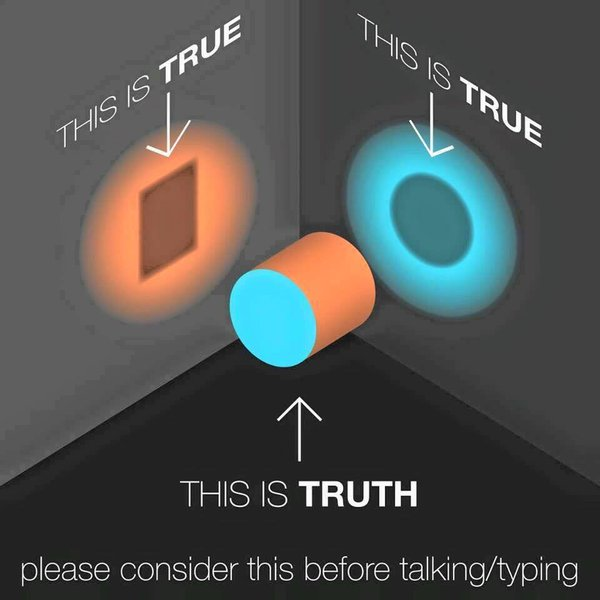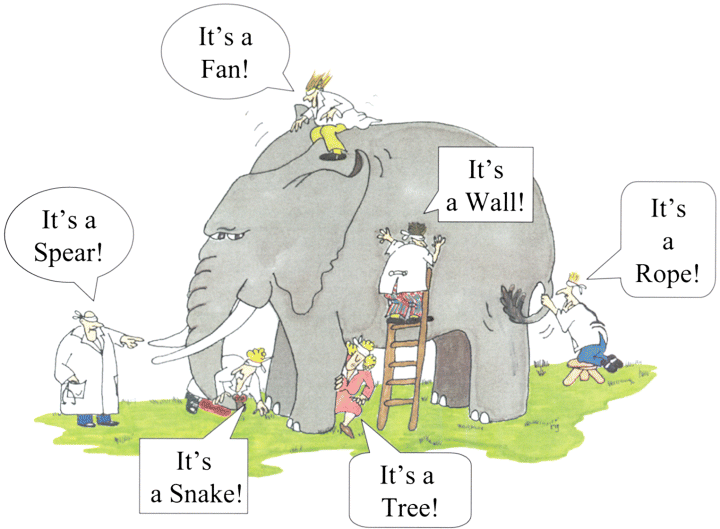
Date: 2025-04-03 Page is: DBtxt003.php L0700-CC-PERSPECTIVES
THE SAME SET OF FACTS LOOK VERY DIFFERENT DEPENDING ON THE PERSPECTIVE |

| Many different organizations recognize that there are more dimensions to progress and performance than simply the profits of a business organization and the wealth of investors. In this example from the Forum for the Future the idea is expressed using the concept of multiple capitals. | |
|
The Multiple Perspectives of MDIA
Multi Dimension Impact Accounting (MDIA) builds on what works well in conventional accounting and the prevailing systems of management information, but instead of having a singular focus on the performance of the organization, uses the same type of transaction logic, accounting and reporting for impact on 7 capitals, a discreet economic activity and multiple perspectives, as follows: ...... Discreet Economic Activity; ...... Organization (profit); ...... People; ...... Place (planet); ...... Product; and ...... Process Data about the performance of a discreet economic entity must be of a form that enables performance to be summarized to enable easy reporting from any of these perspectives. The performance of the organization is the sum of many discreet economic activities. The performance of place is a summation of different set of economic activities. Planet is logically a place. Product flows through many economic activities, through many places, impacts many people and affects the environment ... the product life cycle embracing supply chain, use and post use waste chain and process is about the transformation from one product to another. |
Navigation within this page
Go to Economic Activity Go to Organization Go to People Go to Place (planet) Go to Product Go to Process |
|
Perspective of the DISCREET ECONOMIC ACTIVITY
It is impossible to have meaningful accountability in a very big organization with many different activities. This may suit those that benefit from the performance of big organizations but for society as a whole, this is a problem. Inside the corporate organization there is impressive data collection, analysis and accountability down the level of dapartment, section, individual machine and worker and every product ... but all of this is private and proprietary. From the outside it is possible to get accountability for individual discreet economic activities even though this may be resisted by big organization owners. Specific financial performance may not be accessible, but useful approximations may be made, and judgement about performance relative to the environment in the place and people in the society may be made. |
Go TOP
Open list0300-MDIA-Economic-Activity |
|
Perspective of the ORGANIZATION
Big name business schools have taught many generations of students how to do analysis and make decisions for an organization so that the performance of the organization is optimized. Conventional accounting is at the core of this analysis, and profit is the main metric. This is excellent for those with ownership interest in the organization, but not for the other stakeholders. Conventional metrics for the organization completely ignore the impact of the organization on society as a whole and the environment. The dynamic of the system and the dominant metrics means that as profit for the organization rises, so also does the value of the company to its owners. MDIA and the 7D-Capital framework shows the relationship between the profit of organization and the impact on everything ... the the 7 capitals. |
Go TOP
Open list0300-MDIA-Organization |
|
Perspective of the PEOPLE
The original purpose of economic activity was to improve and maintain quality of life for an individual and the family. For most of recent history there has been a favorable relationship between the profit performance of an organization and the wages of people, which in turn improved and maintained quality of life. This assumption is baked into much of the enviro-socio-economic analysis that is routinely reported to the public. However, in the past 40 years productivity has increased at a fast pace, with the result that less and less people are needed for the same level of production. The dynamic is more productivity leads to less labor and more profit ... in other words a good result for owners of the organization and a bad result for working people and society as a whole. MDIA accounts for not only the impact on the organization, but the impact on people and the impact on place (society). |
Go TOP
Open list0300--MDIA-People |
|
Perspective of the PLACE
The performance of a place should be relatively easy to understand. A place does not move. A place is where people live and work. A place is where discreet economic activities are located. People are able to observe what is going on. The data collected may be verified in ways that are not possible when they get merged into larger data systems. Pollution can be observed and tied back to specific economic activities and to the responsible owners. Place is a part of planet ... but place is human scale, while planet tends to be too large for most of us to understand. |
Go TOP
Open list0300--MDIA-Place |
|
Perspective of the PRODUCT
Probably more than anything else, it is PRODUCT ... goods and services ... that enables quality of life. For most of history, product was scarce because knowlege and productivity was low, but in the past 300 years, there has been amazing technological progress and in the 21st century there is the capacity to make a huge amount of product which in turn can support a good quality of life for everyone. The downside of this is that the manufacturing processes that are used do damage to the environment, and the management systems for organization tend to focus on products with a maximum of profitability rather than products that have the maximum of net impact. In the end it is through product that people are going to have the most impact on the decisions of organizations and in turn on the overall enviro-socio-economic system. When people change their behavior with respect to product, then everything changes. |
Go TOP
Open list0300-MDIA-Product |
|
Perspective of a PROCESS
The efficiency of the economy depends more than anything else on PROCESS. It is process ... the engineering and technical process ... that transforms one set of products into another set of products. The amazing products that have been created in the modern economy are produced using a variety of processes, but as engineering thermodynamics tells us, the baalance between input and output includes some things that manifest as waste, some of which have negative impact on the environment and people. In conventional accounting and business analytics the trend is to optimize the process for maximum return on investment and for money profit. With MDIA the externalities, the impacts on people and planet are also taken into consideratio. |
Go TOP
Open list0300-MDIA-Process |

| PERSPECTIVE | |

| PERSPECTIVE ... which view of the elephant is the right one? | |

| The PEOPLE perspective: This is arguably the most important perspective … | |

| The PRODUCT perspective: Important because it is product (goods and services) that enables a decent modern quality of life. But product also streams through many other components of the system. | |

| The PROCESS perspective: It is the amazing technology that is embedded into PROCESS that makes it possible to have well made PRODUCTS … but some processes are better than others, and this is very important. | |

| The PLACE perspective: Quality of Life for people depends significantly on place … and the performance of place depends a lot on the organizations that locate in a place, the people they employ, the processes they use and the products they produce. | |

| The PROCESS perspective: It is the amazing technology that is embedded into PROCESS that makes it possible to have well made PRODUCTS … but some processes are better than others, and this is very important. |